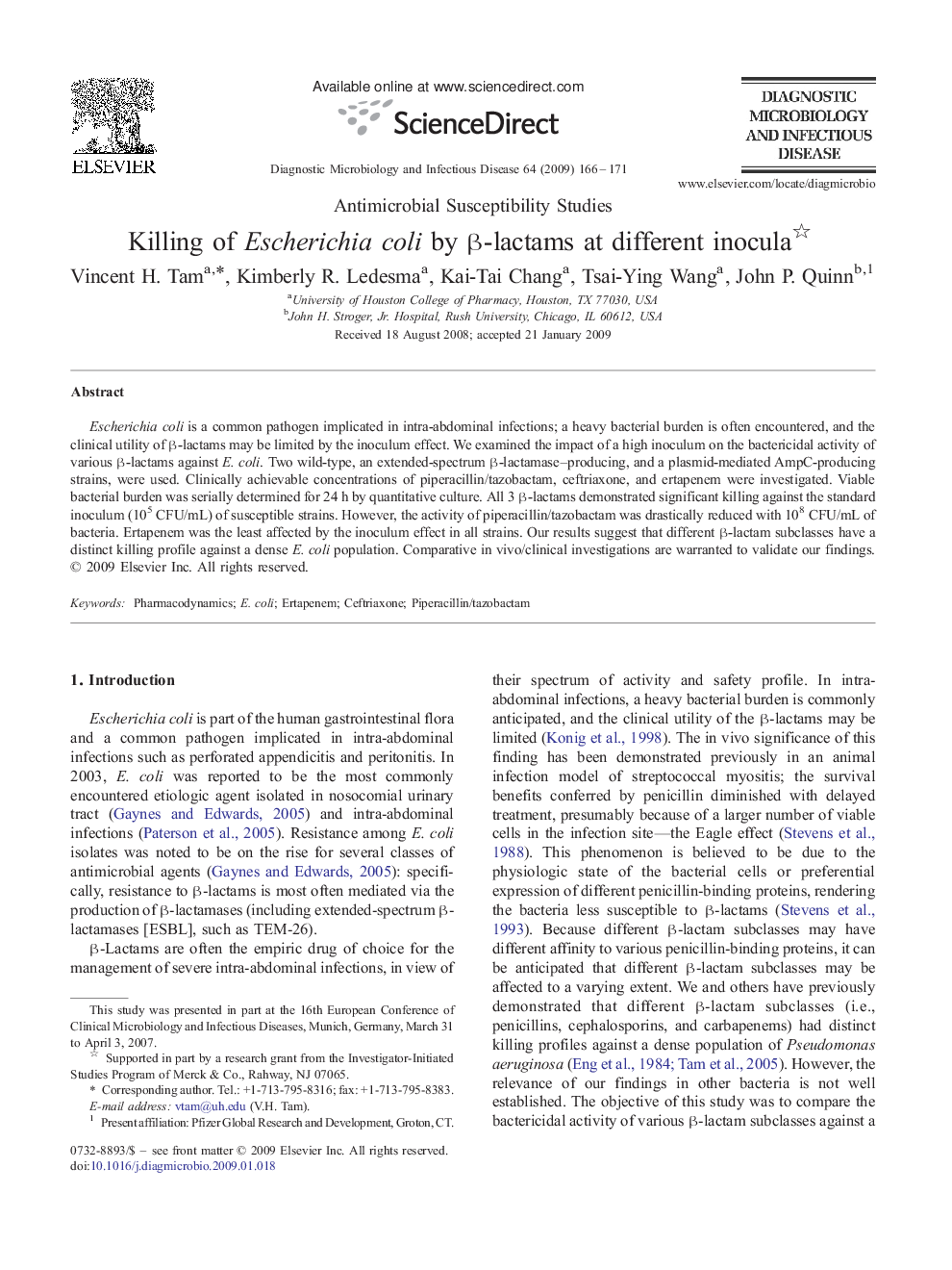| Article ID | Journal | Published Year | Pages | File Type |
|---|---|---|---|---|
| 3348420 | Diagnostic Microbiology and Infectious Disease | 2009 | 6 Pages |
Escherichia coli is a common pathogen implicated in intra-abdominal infections; a heavy bacterial burden is often encountered, and the clinical utility of β-lactams may be limited by the inoculum effect. We examined the impact of a high inoculum on the bactericidal activity of various β-lactams against E. coli. Two wild-type, an extended-spectrum β-lactamase–producing, and a plasmid-mediated AmpC-producing strains, were used. Clinically achievable concentrations of piperacillin/tazobactam, ceftriaxone, and ertapenem were investigated. Viable bacterial burden was serially determined for 24 h by quantitative culture. All 3 β-lactams demonstrated significant killing against the standard inoculum (105 CFU/mL) of susceptible strains. However, the activity of piperacillin/tazobactam was drastically reduced with 108 CFU/mL of bacteria. Ertapenem was the least affected by the inoculum effect in all strains. Our results suggest that different β-lactam subclasses have a distinct killing profile against a dense E. coli population. Comparative in vivo/clinical investigations are warranted to validate our findings.
